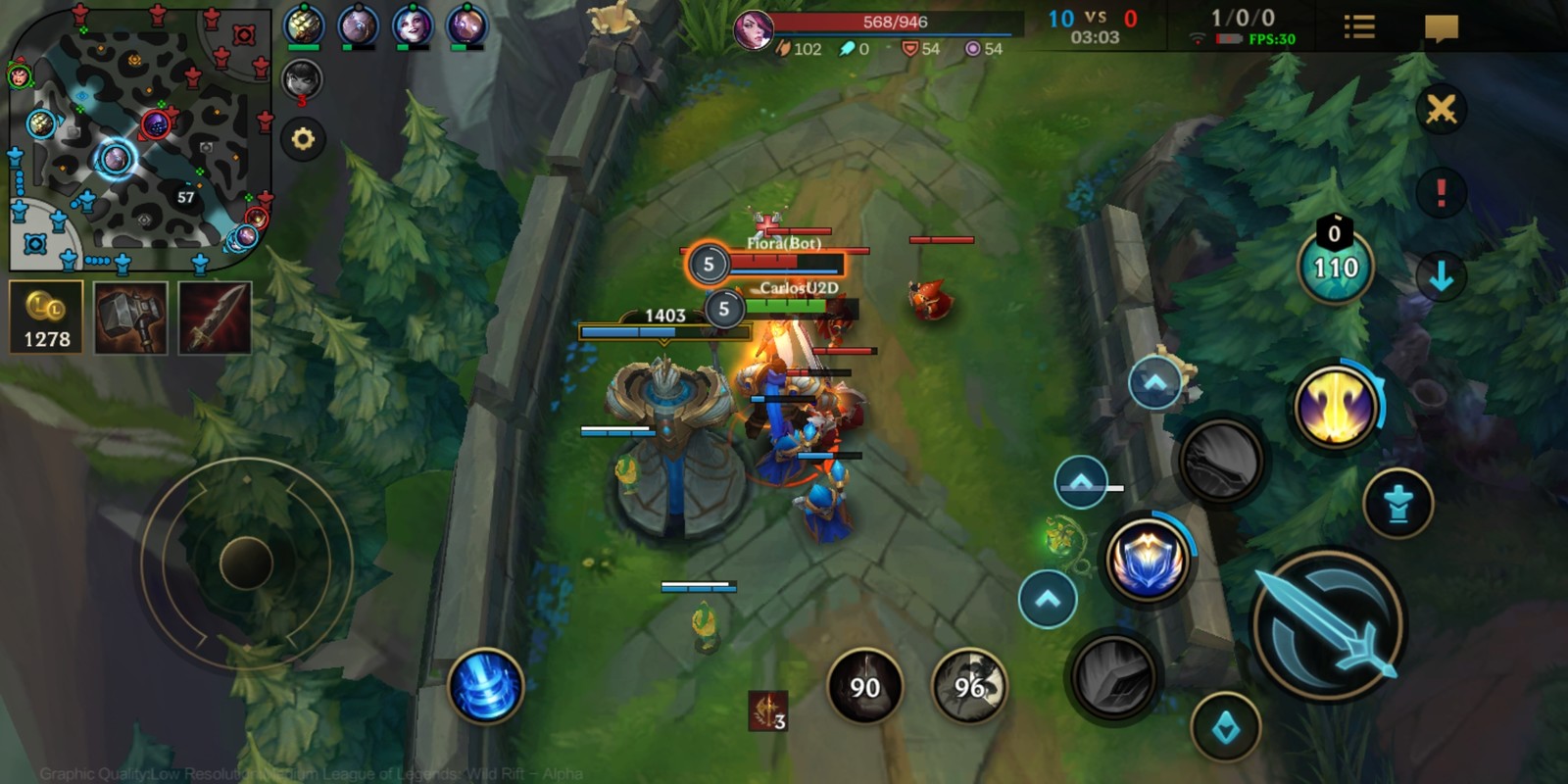League of Legends: Wild Rift is a kinder, gentler League of Legends
This mobile version is a perfect starting point for anyone curious but intimidated by Riot's iconic MOBA.
League of Legends is hopelessly complicated. Even if you somehow memorize the abilities, strengths and weaknesses of all 154 champions, you'll still get stomped unless you've spent hundreds of hours researching and practicing arcane skills like last-hitting, wave management, ward placement, rotations—I could go on.
Wild Rift, the mobile version of League of Legends that just launched last week, doesn't really mess with any of that. You still pick one of dozens and dozens unique champions and square off against another team of five in a map divided by three lanes. You still have to know how to last hit, place wards, and rotate.
Wild Rift's greatest accomplishment is how it distills all of LoL's complexity into intuitive touch controls that work on a 6-inch screen.
But what Wild Rift does change is practically everything else. Items, champion abilities, and countless smaller details have all been tweaked in service of making the game faster and more accessible. Instead of a long game sometimes taking me 45 minutes to an hour, games of Wild Rift are over in just 20 minutes. Most take as little as 15. It's better suited to playing on a phone, sure, but the real win here is how much that softens the trauma of a match gone wrong. I don't take nearly as much of a morale hit when a bad teammate loses us the game because I'm not trapped in a forever war that was obviously lost at the eight-minute mark. Wild Rift might not win over diehard LoL players, but for everyone else it's a much better alternative.

Enter the rift
If you're new to League of Legends, Wild Rift is also just flat-out better at teaching you what the hell is going on. The intro tutorials are more comprehensive, but there's also an entire tutorial section that showers you in rewards for learning Wild Rift's new features. Even for veteran LoL players, it's worth doing. Only a fraction of LoL's champions are in Wild Rift right now, which might disappoint veteran players who love a character that isn't in the game yet, but the tighter cast makes it way easier for new players to wrap their heads around matchups.
Wild Rift's greatest accomplishment is how it distills all of LoL's complexity into intuitive touch controls that work on a 6-inch screen. On PC, League has a long list of hotkeys you have to memorize outside of your four main abilities, but Wild Rift works well without them.
Instead of clicking to move my character like in a real-time strategy game, for example, there's a virtual joystick that just controls them directly. The big attack button will automatically prioritize enemy champions—even if they're in the middle of a group of creeps (LoL slang for the little minions that march down each lane and fight one another). What makes this setup brilliant is a pair of buttons above and below the main attack button which change that attack priority to either focus on enemy creeps or the enemy turret. It's hard to explain why this matters to a non-player, but there's about 32 different instances where attacking the wrong thing would be fatal, and Wild Rift makes it all simple. There's also an option to display enemy portraits that you can tap to automatically make them your primary target, which is a godsend in complicated teamfights.
The other brilliant touch is how ability targeting works. A big part of what makes LoL satisfying is its emphasis on 'skill shots' that require precise aim, timing, and positioning. Instead of using a mouse, skill shots are now targeted by pressing the associated ability button and then dragging your thumb outward, creating a second virtual joystick that helps you aim that ability. The further you drag your thumb outward, the further the targeting reticle moves from your character. Combined with generous auto aim, lining up abilities is very intuitive.
The biggest gaming news, reviews and hardware deals
Keep up to date with the most important stories and the best deals, as picked by the PC Gamer team.
These differences might sound large and alienating, but in the heat of battle Wild Rift feels exactly like League of Legends does. I'm still dancing just behind my creep wave, dashing in to last-hit a minion for extra gold or to poke the enemy champion for some easy damage. When a big team fight breaks out, there's still that pulse-pounding tension of watching 10 health bars whittle away amid explosions of magic.
In the dozen or so hours I've played since Wild Rift has launched, I've been surprised at just how often it creates the same thrilling highs of its PC version. As someone that plays jungle (the one role that doesn't have its own lane but roams between them), I've been able to set up some great ambushes using the touchscreen UI to easily ping the map or the quick-chat menu to send messages to my team.
Wild Rift also seems way less toxic—probably because typing out a string of expletives on your phone requires more effort. Most of the time my team doesn't communicate directly but just relies on quick chat and pings, and that works just fine as long as people are paying attention.
New threads
Wild Rift makes some massive improvements to League of Legends' progression and systems that exist outside of an actual match. The coolest touch is that instead of using the relatively low-poly character models you look at when actually playing, outside of matches all characters have highly detailed models that are gorgeous to look at.
What's more, skins aren't just a coat of paint for your champion. They each have unique cutscenes that play when you unlock them, and there are other cosmetic tweaks you can unlock like different ready poses for when you're in the champion select stage of a new match. It makes it so much easier to get into the fantasy of specific characters when you can see them up close, and I love being able to see my favorite characters rendered in so much detail.
The progression system is shockingly generous too. With a few in-game events happening this week, I've managed to unlock a sizable roster of new champions and skins just by playing each day and banging out a few simple quests. While there's still rewards that only unlock a random champ or skin, others let you pick which one you want, which is a pleasant change.
The new menu screens and high-detail champions that adorn them have me bristling with envy as a PC player. Wild Rift is so good I can only hope that some of its best innovations will one day make their way to PC LoL—preferably as a separate game mode.
As much as I love the 20-minute rounds, I don't think Wild Rift will entirely replace the PC version of League for me. Once you get past the daunting complexity as a new player, it becomes LoL's biggest strength. But Wild Rift is also different enough, and fun enough, that I can easily see myself balancing the time I spend between the two. Wild Rift is just a phenomenal port that's a perfect alternative to the more demanding PC version.
With over 7 years of experience with in-depth feature reporting, Steven's mission is to chronicle the fascinating ways that games intersect our lives. Whether it's colossal in-game wars in an MMO, or long-haul truckers who turn to games to protect them from the loneliness of the open road, Steven tries to unearth PC gaming's greatest untold stories. His love of PC gaming started extremely early. Without money to spend, he spent an entire day watching the progress bar on a 25mb download of the Heroes of Might and Magic 2 demo that he then played for at least a hundred hours. It was a good demo.


